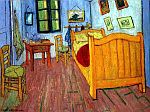Within the spectrum of solitaries there is great diversity. Perhaps the anchorites present the greatest paradox. Our daily routine may seem solitary enough, but we grant ourselves the freedom to move about, to choose our food, our books, our music, our hours, the freedom to daydream, to seek creative outlets, to enter the world of work or society as we see fit or as life and circumstances dictate. We may take our freedom of thought and movement for granted, our pursuits as necessary for our well-being, our obligations as inevitable, yet still respect our ideals of solitude and silence.
But the anchorite willingly renounces all this, perceiving a different order or vision, one that makes this freedom unnecessary, purposeless, and without value. The anchorite gives this up, wants to die to all of it. Thus, historically, was the anchorite’s dwelling considered a tomb, and the ritual of the church that confirmed the anchoritic life was the funerary ritual, the burial of the dead.
Solitary life is a spectrum. The physical isolation and dependence on others seem to contradict the goals of solitude and silence. But are we not dependent on others even in our daily lives: our food, our income, our fuel, our intellectual needs? Is it the chafing against this literal dependency that further drives us to solitude, a drive that the anchorite merely accepts and crafts to herself, turning it on its head?
The anchorite makes of dependence the dependence of others on herself or himself. Others have a moral obligation to the anchorite. Others have an obligation to feed and clothe, to service the dwelling and put off the curious, the disrespectful, the thief. Others have the burden of prayer and remembrance and esteem and justification, not the anchorite. Meanwhile, the anchorite can die to dependency, while other solitaries go on struggling with complex social and interpersonal necessities.
The anchorite shows us that dependency is a relative thing, that to die to smugness and attachment is more important than to strive for a complete lack of dependence on others. Yet, seen in this psychological and moral light, the anchorite is not alone among those who have directly confronted the issue of dependency. Mendicants and wanderers and wilderness hermits may share this insight, which may be conscious or tacit.


